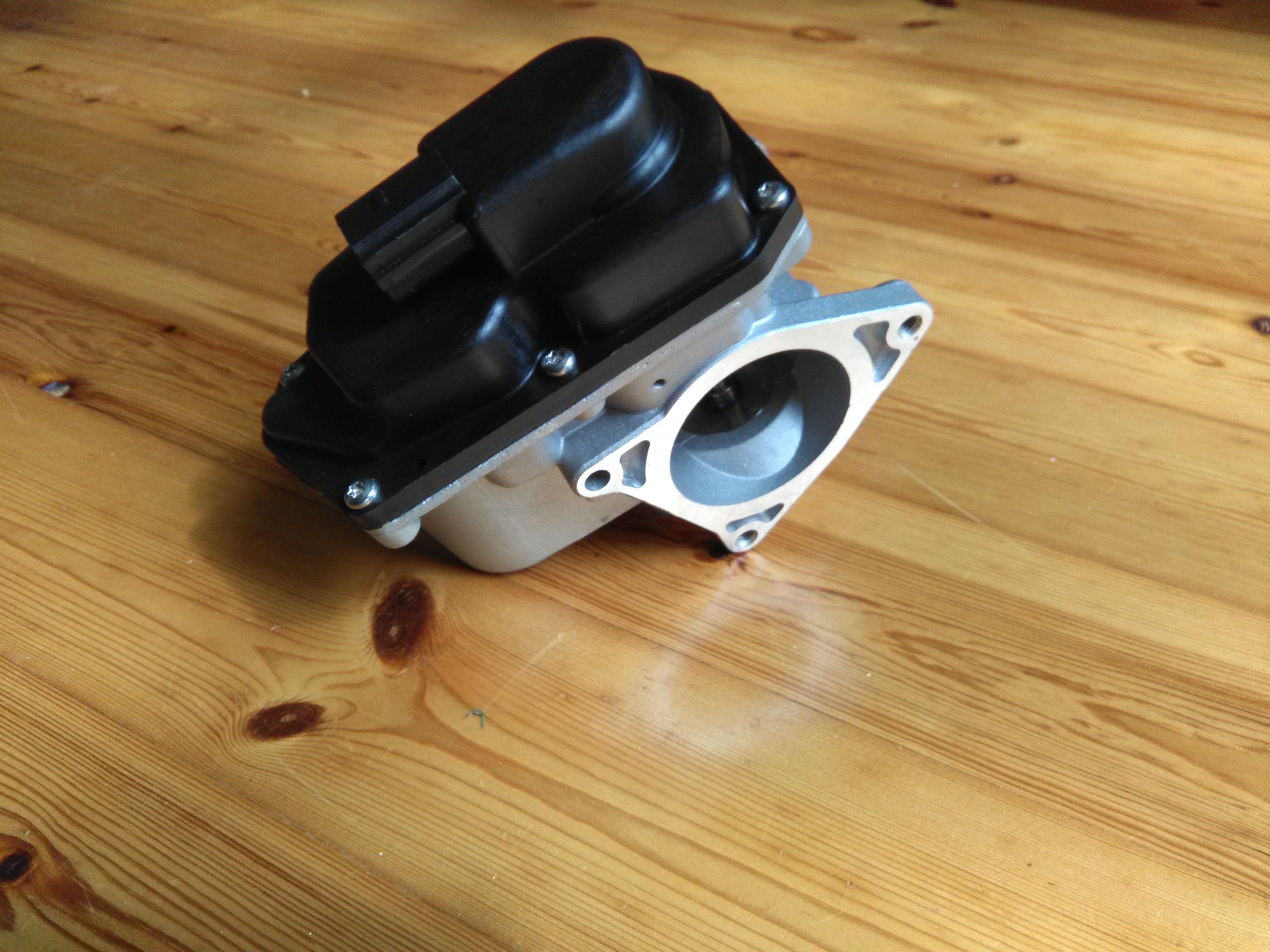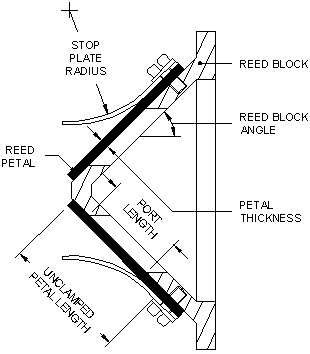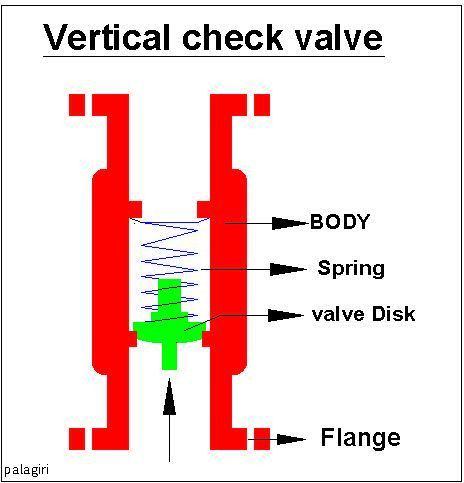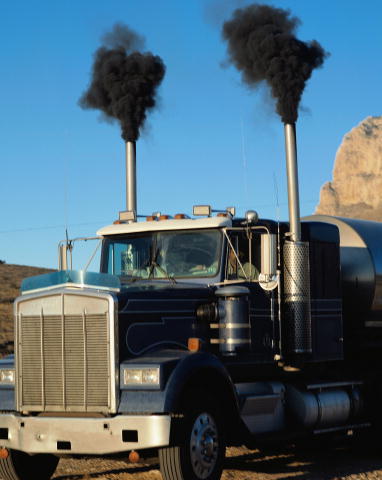|
Thermactor
Secondary air injection (commonly known as air injection) is a vehicle emissions control strategy introduced in 1966, wherein fresh air is injected into the exhaust stream to allow for a fuller secondary combustion of exhaust gases. Development The mechanism by which exhaust emissions are controlled depends on the method of injection and the point at which air enters the exhaust system, and has varied during the course of the development of the technology. The first systems injected air very close to the engine, either in the cylinder head's exhaust ports or in the exhaust manifold. These systems provided oxygen to oxidize (burn) unburned and partially burned fuel in the exhaust before its ejection from the tailpipe. There was significant unburned and partially burned fuel in the exhaust of 1960s and early 1970s vehicles, and so secondary air injection significantly reduced tailpipe emissions. However, the extra heat of recombustion, particularly with an excessively rich exhaust ... [...More Info...] [...Related Items...] OR: [Wikipedia] [Google] [Baidu] |
Vehicle Emissions Control
Vehicle emissions control is the study of reducing the emissions produced by motor vehicles, especially internal combustion engines. The primary emissions studied include hydrocarbons, volatile organic compounds, carbon monoxide, carbon dioxide, nitrogen oxides, particulate matter, and sulfur oxides. Starting in the 1950s and 1960s, various regulatory agencies were formed with a primary focus on studying the vehicle emissions and their effects on human health and the environment. As the world's understanding of vehicle emissions improved, so did the devices used to mitigate their impacts. In the United States, the regulatory requirements of the Clean Air Act, which was amended many times, greatly restricted acceptable vehicle emissions. With the restrictions, vehicles started being designed more efficiently by utilizing various emission control systems and devices which became more common in vehicles over time. Types of emissions Emissions of many air pollutants have been shown t ... [...More Info...] [...Related Items...] OR: [Wikipedia] [Google] [Baidu] |
Throttle
A throttle is a mechanism by which fluid flow is managed by construction or obstruction. An engine's power can be increased or decreased by the restriction of inlet gases (by the use of a throttle), but usually decreased. The term ''throttle'' has come to refer, informally, to any mechanism by which the power or speed of an engine is regulated, such as a car's accelerator pedal. What is often termed a ''throttle'' (in an aviation context) is also called a thrust lever, particularly for jet engine powered aircraft. For a steam locomotive, the valve which controls the steam is known as the regulator. Internal combustion engines In an internal combustion engine, the throttle is a means of controlling an engine's power by regulating the amount of fuel or air entering the engine. In a motor vehicle the control used by the driver to regulate power is sometimes called the throttle, accelerator, or gas pedal. For a gasoline engine, the throttle most commonly regulates the amount of ... [...More Info...] [...Related Items...] OR: [Wikipedia] [Google] [Baidu] |
Chevrolet Camaro
The Chevrolet Camaro is a mid-size American automobile manufactured by Chevrolet, classified as a pony car. It first went on sale on September 29, 1966, for the 1967 model year and was designed to compete with the Ford Mustang. The Camaro shared its platform and major components with the Firebird, produced by General Motors' Pontiac division that was also introduced for the 1967 model year. Four distinct generations of the Camaro were developed before production ended in 2002. The nameplate was revived on a concept car that evolved into the fifth-generation Camaro; production started on March 16, 2009. Production of the sixth generation of the Camaro ended in December 2023, for the 2024 model year. Background Before any official announcement, reports began running during April 1965 within the automotive press that Chevrolet was preparing a competitor to the Ford Mustang, code-named ''Panther''. On June 21, 1966, around 200 automotive journalists received a telegram fro ... [...More Info...] [...Related Items...] OR: [Wikipedia] [Google] [Baidu] |
Exhaust Gas Recirculation
In internal combustion engines, exhaust gas recirculation (EGR) is a nitrogen oxide () emissions reduction technique used in petrol engine, petrol/gasoline, diesel engines and some hydrogen internal combustion engine vehicle, hydrogen engines. EGR works by recirculating a portion of an engine's exhaust gas back to the engine cylinder (engine), cylinders. The exhaust gas displaces atmospheric air and reduces in the combustion chamber. Reducing the amount of oxygen reduces the amount of fuel that can burn in the cylinder thereby reducing peak in-cylinder temperatures. The actual amount of recirculated exhaust gas varies with the engine operating parameters. In the combustion cylinder, is produced by high-temperature mixtures of atmospheric nitrogen and oxygen, and this usually occurs at cylinder peak pressure. In a spark-ignition engine, an ancillary benefit of recirculating exhaust gases via an external EGR valve is an increase in efficiency, as charge dilution allows a large ... [...More Info...] [...Related Items...] OR: [Wikipedia] [Google] [Baidu] |
Chrysler
FCA US, LLC, Trade name, doing business as Stellantis North America and known historically as Chrysler ( ), is one of the "Big Three (automobile manufacturers), Big Three" automobile manufacturers in the United States, headquartered in Auburn Hills, Michigan. It is the American subsidiary of the multinational automotive company Stellantis. Stellantis North America sells vehicles worldwide under the Chrysler (brand), Chrysler, Dodge, Jeep, and Ram Trucks nameplates. It also includes Mopar, its automotive parts and accessories division, and Street and Racing Technology, SRT, its performance automobile division. The division also distributes Alfa Romeo, Fiat, and Maserati vehicles in North America. The original Chrysler Corporation was founded in 1925 by Walter Chrysler from the remains of the Maxwell Motor Company. In 1998, it merged with Daimler AG, Daimler-Benz, which renamed itself DaimlerChrysler but in 2007 sold off its Chrysler stake. The company operated as Chrysler LLC thr ... [...More Info...] [...Related Items...] OR: [Wikipedia] [Google] [Baidu] |
American Motors
American Motors Corporation (AMC; commonly referred to as American Motors) was an American automobile manufacturing company formed by the mergers and acquisitions, merger of Nash-Kelvinator Corporation and Hudson Motor Car Company on May 1, 1954. At the time, it was the largest corporate merger in U.S. history. American Motors' most similar competitors were those automakers that held similar annual sales levels, such as Studebaker, Packard, Kaiser Motors, and Willys-Overland. Their largest competitors were the Big Three (automobile manufacturers), Big Three—Ford Motor Company, Ford, General Motors, and Chrysler. American Motors' production line included Compact car, small cars—the Rambler American, which began as the Nash Rambler in 1950, AMC Hornet, Hornet, AMC Gremlin, Gremlin, and AMC Pacer, Pacer; intermediate car, intermediate and full-size car, full-sized cars, including the AMC Ambassador, Ambassador, Rambler Classic, AMC Rebel, Rebel, and AMC Matador, Matador; musc ... [...More Info...] [...Related Items...] OR: [Wikipedia] [Google] [Baidu] |
Air Filter
A particulate air filter is a device composed of fibrous, or porous materials which removes particulates such as smoke, dust, pollen, mold, viruses and bacteria from the air. Filters containing an adsorbent or catalyst such as charcoal (carbon) may also remove odors and gaseous pollutants such as volatile organic compounds or ozone. Air filters are used in applications where air quality is important, notably in building ventilation systems and in engines. Some buildings, as well as aircraft and other human-made environments (e.g., satellites, and Space Shuttles) use foam, pleated paper, or spun fiberglass filter elements. Another method, air ionizers, use fibers or elements with a static electric charge, which attract dust particles. The air intakes of internal combustion engines and air compressors tend to use either paper, foam, or cotton filters. Oil bath filters have fallen out of favour aside from niche uses. The technology of air intake filters of gas turbines has impr ... [...More Info...] [...Related Items...] OR: [Wikipedia] [Google] [Baidu] |
Reed Valve
Reed valves are a type of check valve which restrict the flow of fluids to a single direction, opening and closing under changing pressure on each face. Modern versions often consist of flexible metal or composite materials (fiberglass or carbon fiber). Applications Traditional Reed valves, normally a leather flap covering a hole, are amongst the earliest form of automatic flow control for liquids and gases. They have been used for thousands of years in water pumps and for hundreds of years in bellows for high-temperature forges and musical instruments such as church organs and accordions. In nature, heart valves operate in a somewhat similar fashion. Pumps Reed valves are used in some reciprocating compressor designs, and in the pumping element of some musical instruments, large and small. Two-stroke engines Reed valves are commonly used in high-performance versions of the two-stroke engine, where they control the fuel-air mixture admitted to the cylinder. As ... [...More Info...] [...Related Items...] OR: [Wikipedia] [Google] [Baidu] |
Engine Idle
An engine or motor is a machine designed to convert one or more forms of energy into mechanical energy. Available energy sources include potential energy (e.g. energy of the Earth's gravitational field as exploited in hydroelectric power generation), heat energy (e.g. geothermal), chemical energy, electric potential and nuclear energy (from nuclear fission or nuclear fusion). Many of these processes generate heat as an intermediate energy form; thus heat engines have special importance. Some natural processes, such as atmospheric convection cells convert environmental heat into motion (e.g. in the form of rising air currents). Mechanical energy is of particular importance in transportation, but also plays a role in many industrial processes such as cutting, grinding, crushing, and mixing. Mechanical heat engines convert heat into work via various thermodynamic processes. The internal combustion engine is perhaps the most common example of a mechanical heat engine in whi ... [...More Info...] [...Related Items...] OR: [Wikipedia] [Google] [Baidu] |
Manifold Vacuum
Manifold vacuum, or engine vacuum in a petrol engine is the difference in air pressure between the engine's intake manifold and Earth's atmosphere. Manifold vacuum is an effect of a piston's movement on the induction stroke and the airflow through a throttle in the intervening carburetor or throttle body leading to the intake manifold. It is a result of the amount of restriction of airflow through the engine. In some engines, the manifold vacuum is also used as an auxiliary power source to drive engine accessories and for the crankcase ventilation system. Manifold vacuums should not be confused with venturi vacuums, which are an effect exploited in some carburetors to establish a pressure difference roughly proportional to mass airflow and to maintain a somewhat constant air/fuel ratio. It is also used in light airplanes to provide airflow for pneumatic gyroscopic instruments. Overview The rate of airflow through an internal combustion engine is an important factor deter ... [...More Info...] [...Related Items...] OR: [Wikipedia] [Google] [Baidu] |
Check Valve
A check valve, non-return valve, reflux valve, retention valve, foot valve, or one-way valve is a valve that normally allows fluid (liquid or gas) to flow through it in only one direction. Check valves are two-port valves, meaning they have two openings in the body, one for fluid to enter and the other for fluid to leave. There are various types of check valves used in a wide variety of applications. Check valves are often part of common household items. Although they are available in a wide range of sizes and costs, check valves generally are very small, simple, and inexpensive. Check valves work automatically and most are not controlled by a person or any external control; accordingly, most do not have any valve handle or stem. The bodies (external shells) of most check valves are made of plastic or metal. An important concept in check valves is the cracking pressure which is the minimum differential upstream pressure between inlet and outlet at which the valve will operate ... [...More Info...] [...Related Items...] OR: [Wikipedia] [Google] [Baidu] |
Motor Vehicle Emissions
Exhaust gas or flue gas is emitted as a result of the combustion of fuels such as natural gas, gasoline (petrol), diesel fuel, fuel oil, biodiesel blends, or coal. According to the type of engine, it is discharged into the atmosphere through an exhaust pipe, flue gas stack, or propelling nozzle. It often disperses downwind in a pattern called an ''exhaust plume''. It is a major component of motor vehicle emissions (and from stationary internal combustion engines), which can also include crankcase blow-by and evaporation of unused gasoline. Air pollution from burning fossil fuels is estimated to kill over 5 million people each year. Motor vehicle emissions are a common source of air pollution and are a major ingredient in the creation of smog in some large cities. Composition The largest part of most combustion gas is nitrogen (N2), water vapor (H2O) (except with pure-carbon fuels), and carbon dioxide (CO2) (except for fuels without carbon); these are not toxic or noxious (a ... [...More Info...] [...Related Items...] OR: [Wikipedia] [Google] [Baidu] |






